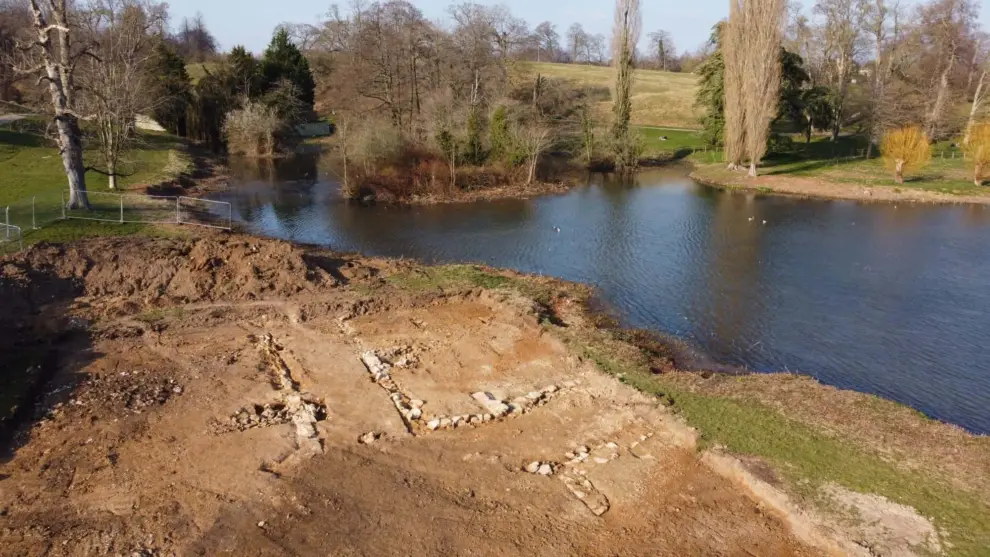Archaeologists have discovered what they believe to be the remains of a 14th century watermill complex at Blenheim ahead of major dredging work being undertaken to Queen Pool by leading wet civil engineering firm Land & Water.
The stone structures were uncovered at the UNESCO World Heritage Site by Wessex Archaeology prior to work commencing to ensure no historical remains are affected.
It’s believed the watermill is associated with Woodstock Palace, a royal hunting lodge that played host to no fewer than 16 British monarchs over its 700-year history with everyone from Ethelred the Unready to Henry VIII having spent time there.
Demolished in 1720 to make way for Blenheim Palace, it was also the birthplace of the Black Prince and used as a temporary prison for Queen Elizabeth I, who is said to have carved ‘Much suspected by me, nothing proved can be, Quoth Elizabeth prisoner’ on a window sill.
Charlie Oakes, Project Manager at Land & Water says, “We are delighted to hear the discovery of some historic findings ahead of the dredge. The project site has been carefully monitored and assessed by Archaeologists so that any significant artefacts can be recorded and protected.
“Wessex Archaeology have informed us that the remains found this year comprise part of the stone-lined mill race, directing water from the mill and are surprisingly well-preserved and substantial. They have also discovered stone water channels, which would have been part of a medieval mill site, recorded as being demolished in 1334, and which was partly excavated in the mid-1970s.”
The restoration works will see Land & Water begin the first dredge of Queen’s Pool in over 100 years and will look to remove 300,000 cubic metres of silt, enough to fill Wembley Stadium, to return the Capability Brown-designed lake to its original depth of two metres from its current shallows of 30cm.
